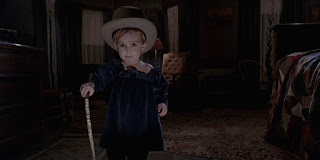Pet Sematary (Mary Lambert, 1989, USA)
It took 13 years from the release of Carrie for Stephen King to bring one of his novels to the screen. While he had previously sat in the director's chair on Maximum Overdrive, that film was based on a rather weak short story. Pet Sematary, written in 1983, is by contrast generally regarded as one of the author's best works, and certainly one of his most personal as well. It is not a major surprise that he demanded the film remain entirely faithful to his script. Director Mary Lambert, who had previously worked on many acclaimed music videos, was brought into the director's chair - perhaps because she was a close friend of the Ramones (they lent two songs, including the title track, to the film).
Pet Sematary was a major commercial success, becoming one of the top-grossing films of 1989 - this at a time when King was going through a lull in box office success (1987 saw the first of many derivative Stephen King sequels - A Return to Salem's Lot). While the film has its share of faults, it manages to contain some of King's worst traits. This is mainly due to the visual sensibility of Lambert, who conjures some striking images in the film (Rachel Creed's sister Zelda haunted many nightmares). The cast is somewhat weak, with the primary exceptions being Fred Gwynne (perfectly cast as Jud Crandall) and child actor Miko Hughes as Gage Creed. Victor Pascow, the dead jogger who comes back into the film to be a haunting ghost of good, is a source of great annoyance to many. This is where it may have been best to adjust King's script. Overall, however, Pet Sematary is memorable enough to warrant repeated viewings and will easily satisfy most fans of the source material.
7/10




Comments
Post a Comment